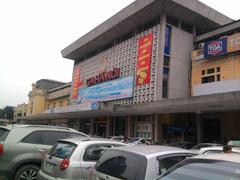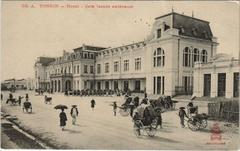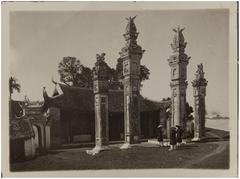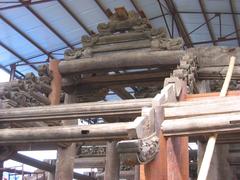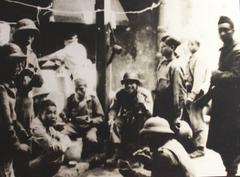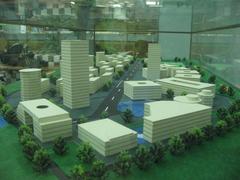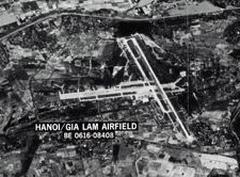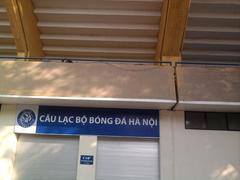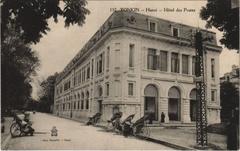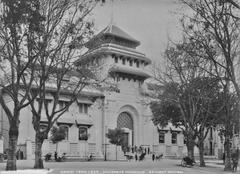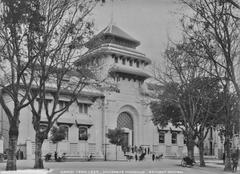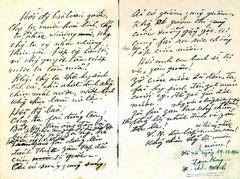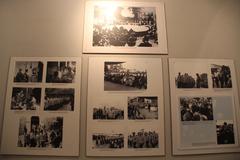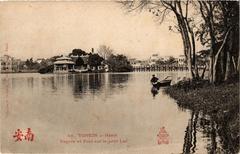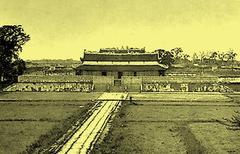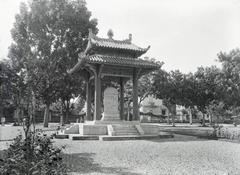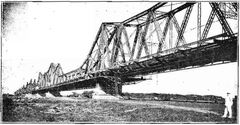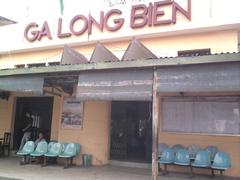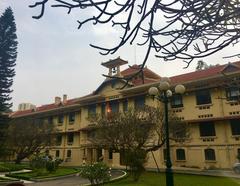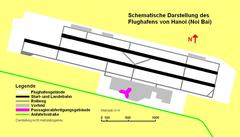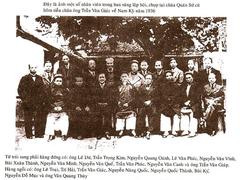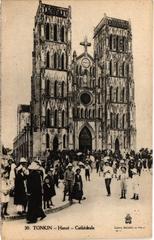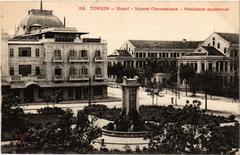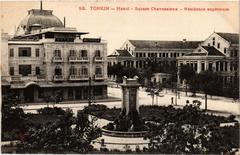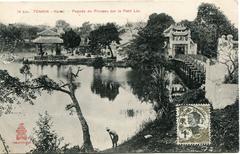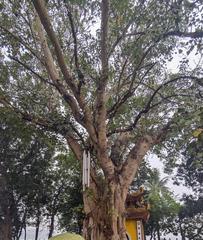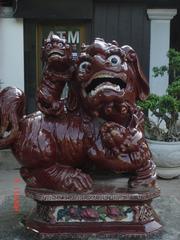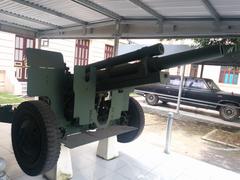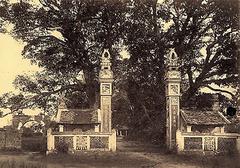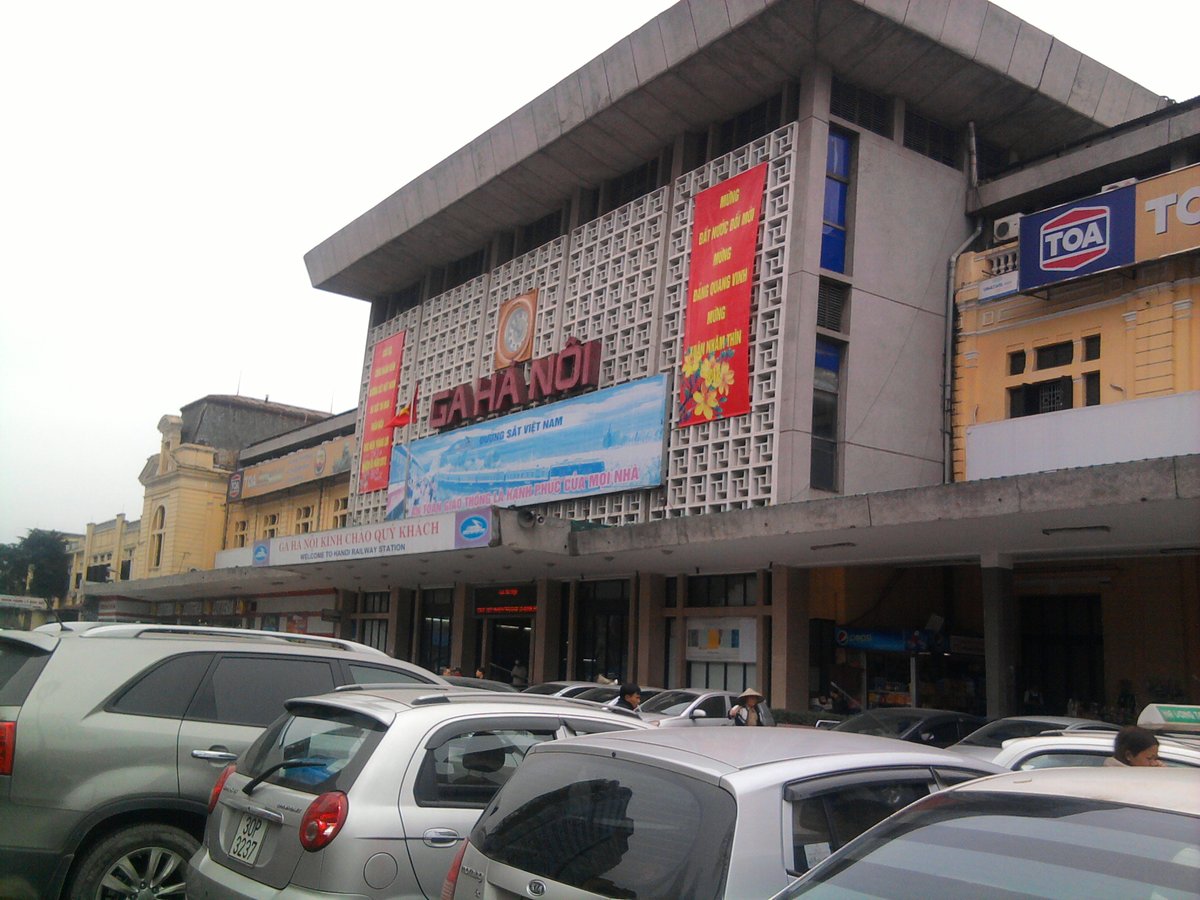
Hanoi Railway Station Visiting Hours, Tickets, and Travel Guide
Date: 14/06/2025
Introduction
Hanoi Railway Station (Ga Hà Nội) is a central hub in Vietnam’s rail network and a distinguished historical landmark in the heart of Hanoi. Established during the French colonial era in 1902, the station’s architecture uniquely blends French colonial elegance with modern post-war features, reflecting Vietnam’s complex history and vibrant urban evolution. Its strategic location as the northern terminus of the North-South Reunification Railway and proximity to the Old Quarter and Hoan Kiem Lake make it a focal point for both travelers and history enthusiasts (north-vietnam.com; Hanoi Old Quarter Guide).
This comprehensive guide details the station’s history, architecture, visitor information, ticketing, and key travel tips. Additionally, it includes an in-depth look at the adjacent Hanoi Train Street—a unique urban phenomenon where trains pass within inches of residential homes and lively cafés—covering visiting hours, safety guidelines, and cultural context for an enriching and safe experience (Local Vietnam; Seat61; Shipped Away; Asia Travel Mates).
Table of Contents
- Introduction
- Historical Evolution of Hanoi Railway Station
- Architectural Features
- Visitor Information
- Station Layout, Facilities, and Train Services
- Cultural and Urban Significance
- Frequently Asked Questions (FAQ)
- Hanoi Train Street Guide
- Summary & Final Tips
- Sources & Further Reading
Historical Evolution of Hanoi Railway Station
Colonial Foundations and Early Development
Inaugurated in 1902, Hanoi Railway Station was constructed to serve the expanding French Indochina rail network, notably as the northern anchor of the North-South line connecting Hanoi to Saigon. Its opening, alongside the Long Bien Bridge, symbolized both colonial ambition and the growing integration of Vietnam’s regions (north-vietnam.com).
Wartime Resilience and Post-Colonial Transformation
The station endured significant wartime damage during the First Indochina War and the Vietnam War, often targeted due to its strategic role. Post-1975, major renovations modernized the station, adapting it to the needs of a reunified Vietnam while preserving its historical essence (north-vietnam.com).
Modernization and Future Prospects
Ongoing modernization projects focus on improving facilities, safety, and efficiency, with plans for high-speed rail and electrification placing Hanoi Railway Station at the center of Vietnam’s rail future (north-vietnam.com).
Architectural Features
Original French Colonial Design
The original 1902 structure is a fine example of French colonial architecture, with a symmetrical façade, arched windows, and Beaux-Arts influences. The use of local materials combined with imported fixtures reflects the era’s style.
Post-War Reconstruction and Modern Additions
After heavy bombing in the American War, the central hall was rebuilt in 1976 in a modernist style, while the two colonial wings were preserved. This contrast visually narrates the station’s layered history (north-vietnam.com).
Interior Layout and Passenger Facilities
The main hall houses ticket counters, waiting areas, and information desks. Amenities include electronic departure boards, luggage storage, restrooms, and dining options with local fare.
Platform and Track Configuration
Multiple platforms serve long-distance and regional routes, with covered walkways for easy access. Tracks extend south to cities like Hue, Da Nang, Nha Trang, and Ho Chi Minh City, while nearby lines provide access to northern destinations such as Sapa and Ha Long Bay (north-vietnam.com).
Visitor Information
Visiting Hours and Ticketing
- Hours: Open daily from 5:00 AM to 10:00 PM.
- Ticketing: Tickets are available at on-site counters, online via official rail websites, or authorized travel agencies. Advance booking is recommended during busy periods.
Accessibility
Ramps and accessible restrooms are available. Passengers can request additional assistance at information desks.
Guided Tours and Events
While no official tours are offered, the station is often included in local historical walking tours. Special events occasionally occur during national holidays.
Photographic Highlights
- The juxtaposition of colonial and modernist architecture provides excellent photo backdrops.
- The vibrant main hall and platforms offer dynamic scenes.
- The nearby Train Street is a favorite spot for capturing trains passing through the city (wheretarawent.com).
Nearby Attractions and Travel Tips
- Old Quarter: A short walk away, offering markets, street food, and culture.
- Hoan Kiem Lake: A tranquil city centerpiece.
- Train Street: For a unique urban experience, always exercise caution and follow safety rules.
Travel Tip: Use taxis, buses, or ride-hailing apps for convenient station access, especially during peak times.
Station Layout, Facilities, and Train Services
Dual-Terminal Structure: Station A and Station B
- Station A (120 Le Duan): Main terminal for southbound trains to Hue, Da Nang, and Ho Chi Minh City. Architectural highlights include colonial wings and a modernist central hall (Hanoi Old Quarter Guide).
- Station B (1 Tran Quy Cap): Handles northbound trains to Lao Cai (Sapa) and China, mainly servicing private tourist trains (Local Vietnam).
Navigating Between Terminals: The two sections are not internally connected; travelers must exit and walk around the block or use the level crossing. Always check your departure terminal in advance, especially for private trains (Seat61).
Platform and Track Arrangement
- Station A: Multiple platforms for national services; access is restricted until just before departure.
- Station B: Fewer tracks, mainly for Sapa-bound and private trains.
Digital screens display bilingual information for all departures (Local Vietnam).
Facilities and Passenger Services
- Waiting Areas: Indoor, air-conditioned seating zones.
- Food & Retail: Multiple food outlets, including a Lotteria in Station A and snack stalls in both terminals.
- Financial Services: Several ATMs and short-term luggage storage.
- Accessibility: Information desks with English-speaking staff, accessible restrooms, and taxi/ride-hailing points.
Train Services Overview
- Domestic Routes: North-South Reunification Line (Hanoi–Ho Chi Minh City); regional lines to Sapa, Hai Phong, and China.
- Private/Tourist Trains: Luxury sleeper carriages to Sapa, with tickets available via travel agents or online platforms.
Practical Tips
- Confirm your terminal before arrival.
- Arrive 30–45 minutes ahead of departure.
- Carry your ticket (paper or e-ticket) for boarding.
- Plan for busy evenings and holidays.
- Notify staff in advance if mobility assistance is needed.
- Explore local attractions before or after your train journey.
Cultural and Urban Significance
Hanoi Railway Station stands as a testament to Vietnam’s journey from colonialism through war and into modernity. Its prominent location weaves it into the city’s cultural fabric, serving as a gateway to exploration and a living monument to resilience and adaptation. The nearby Train Street underscores the city’s dynamic coexistence of tradition and change (wheretarawent.com).
Frequently Asked Questions (FAQ)
Q: What are the station’s visiting hours?
A: 5:00 AM to 10:00 PM daily.
Q: Where can I buy tickets?
A: At station counters, online via 12Go.Asia, Baolau, or official rail websites.
Q: Is the station accessible for disabled travelers?
A: Yes, with ramps, accessible restrooms, and staff assistance.
Q: Are guided tours available?
A: No official tours, but local operators may include the station in city tours.
Q: Can I store luggage at the station?
A: Yes, short-term storage is available for a fee.
Hanoi Train Street Guide
Overview & Unique Appeal
Hanoi Train Street is an urban marvel where active railway tracks run just centimeters from residential homes and cafés, delivering an exhilarating blend of local life and railway spectacle (Shipped Away; Asia Travel Mates). Located between Phùng Hưng and Lý Nam Đế streets, near the Old Quarter, it’s a must-see for visitors seeking a distinctive Hanoi experience.
Visiting Hours & Train Schedule
Train Street has no official opening or closing hours, but trains pass primarily in late afternoons and evenings on weekdays, with increased frequency on weekends (Shipped Away; Minh An Life). Check with café owners on arrival for the most current schedule, as they provide up-to-date information (RedBus Vietnam).
Ticket Information
Access is free, but visitors are encouraged to support local cafés by purchasing drinks or snacks, especially during train times (Shipped Away).
Café Culture & Best Viewing Spots
Train-side cafés like Café 90 Đường Tàu, Cafe Sân Ga, and 65 Railway Coffee offer ideal vantage points and safety during train passages (RedBus Vietnam). Café staff help manage crowds and keep visitors safe.
Safety Guidelines
Safety is crucial. After a 2019 incident, authorities occasionally restrict access. When a train is due, staff instruct everyone to clear the tracks and move inside cafés or behind safety lines (Shipped Away). Never cross the tracks or linger during train approach. Photography on the tracks during train times is strongly discouraged (Minh An Life).
Accessibility & Getting There
Train Street is easily reached on foot or by taxi from the Old Quarter (Shipped Away). The area is narrow and uneven, posing challenges for those with mobility issues.
Nearby Attractions
Combine your visit with nearby landmarks: the Old Quarter, Hoan Kiem Lake, the Temple of Literature, Thăng Long Imperial Citadel, and more (Prime Travel Vietnam; Asia Travel Mates; GoNetoVietnam).
Practical Tips
- Arrive early for the best seating.
- Consult café owners for train schedules and safety advice.
- Always follow staff instructions.
- Respect residents’ privacy and property.
- Be alert—trains may arrive unexpectedly.
Summary & Final Tips
Hanoi Railway Station and Hanoi Train Street together encapsulate the rich tapestry of Vietnamese heritage, urban life, and travel adventure. The station’s blend of colonial and modernist architecture, alongside comprehensive passenger services, makes it both a practical gateway and a cultural experience (north-vietnam.com; Hanoi Old Quarter Guide).
Hanoi Train Street offers an unmatched urban spectacle, where visitors can immerse themselves in the city’s energy and community spirit—always keeping safety as the top priority (Shipped Away; Asia Travel Mates).
For real-time schedules, ticketing, and travel updates, consult the official Vietnam Railways website, 12Go.Asia, Baolau, and local platforms like Audiala. Respect local customs, adhere to safety guidance, and enjoy your journey through these iconic Hanoi sites (Seat61; 12Go.Asia; Baolau).
Sources & Further Reading
- Hanoi Railway Station: A Historical Landmark and Visitor’s Guide, north-vietnam.com
- Complete Guide to Hanoi Railway Station: Visiting Hours, Tickets & Travel Tips, Hanoi Old Quarter Guide
- Complete Guide to Hanoi Railway Station: Visiting Hours, Tickets & Travel Tips, Local Vietnam
- Complete Guide to Hanoi Railway Station: Visiting Hours, Tickets & Travel Tips, Seat61
- Hanoi Train Street Visiting Hours, Tickets, and Safety Guide: Shipped Away
- Hanoi Train Street Visiting Hours, Tickets, and Safety Guide: Asia Travel Mates
- Hanoi Train Street Visiting Hours, Tickets, and Safety Guide: RedBus Vietnam
- Hanoi Train Street Visiting Hours, Tickets & Nearby Historical Sites Guide: Prime Travel Vietnam
- Hanoi Train Street Visiting Hours & Nearby Historical Sites: GoNetoVietnam
- Hanoi Train Street Visiting Hours & Nearby Historical Sites: Bucketlist Bri
- Complete Guide to Hanoi Railway Station: Visiting Hours, Tickets & Travel Tips, Sapa Nomad
- Complete Guide to Hanoi Railway Station: Visiting Hours, Tickets & Travel Tips, 12Go.Asia
- Complete Guide to Hanoi Railway Station: Visiting Hours, Tickets & Travel Tips, Baolau
